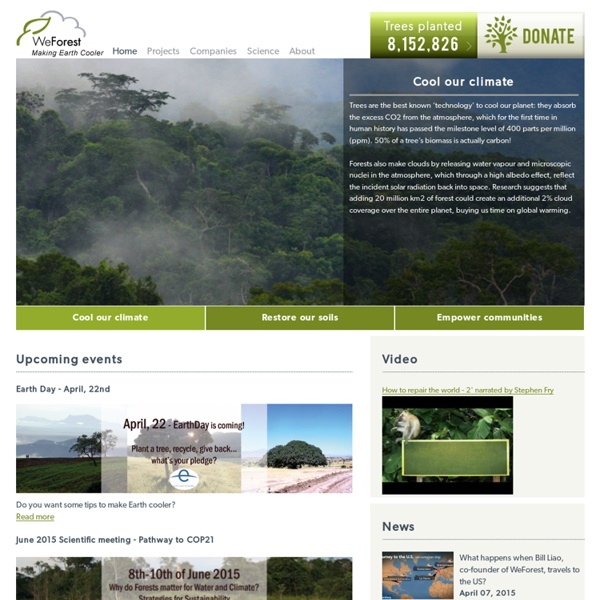



Scientists Seeking to Save World Find Best Technology Is Trees (Bloomberg) -- Oxford University scientists, after a year of research, have determined the best technology to suck carbon dioxide from the atmosphere and try to reverse global warming. It’s trees. They considered methods ranging from capturing emissions from factories and power stations to extracting carbon dioxide directly from the air, and adding lime to oceans to increase their absorption of the gas, a study released on Tuesday showed. None were more promising than planting trees, or baking waste wood to form a type of charcoal that can be added to soil. Relative to other so-called Negative Emissions Technologies, afforestation and biochar are low-cost, have fewer uncertainties and offer other benefits to the environment, the research shows. Policy makers need to work to increase their use as they are the most encouraging of the possibilities through 2050, the scientists wrote. To contact the reporter on this story: Louise Downing in London at ldowning4@bloomberg.net
ZepSolar Central Arid Zone Research Institute Division of Natural Resources and EnvironmentDivision of Integrated Land Use Management and Farming Systems Division of Plant Improvement, Propagation and Pest Management Division of Livestock Production Systems & Range ManagementDivision of Agricultural Engineering for Arid Production Systems Division of Transfer of Technology, Training and Production Economics Division of Natural Resources and Environment Major Programmes Integrated basic and human resource appraisal, monitoring, and desertification Disciplines Agronomy, Agro-meteorology, Economic Botany, Geography, Pedology, Soil and Water Conservation Engineering, Soil Chemistry Current activities Division of Integrated Land Use Management and Farming Systems Integrated arid land farming system researchPlant product processing and value additionManagement of land and water resources Agronomy, Agroforestry, Horticulture, Plant Physiology, Soil and Water Conservation Engineering, Soil Physics
Welcome to the Frontpage - Ecological Building Network - The Art and Science of Building Well Brasil exporta cerca de 112 trilhões de litros de água doce por ano Contêineres saem diariamente de portos na costa brasileira abarrotados de carne bovina, soja, açúcar, café, entre outros produtos agrícolas exportados para o mundo. Mas dentro deles há um insumo invisível, cujo valor ultrapassa cálculos estritamente econômicos. Ao longo do ano, o Brasil envia ao Exterior cerca de 112 trilhões de litros de água doce, segundo dados da Unesco — o equivalente a quase 45 milhões de piscinas olímpicas ou mais de 17 mil lagoas do tamanho da Rodrigo de Freitas. As Nações Unidas (ONU) estimam que, até 2025, cerca de dois terços da população mundial estarão carentes de recursos hídricos, sendo que cerca de 1,8 bilhão enfrentarão severa escassez de água. — A alocação dos recursos hídricos, além de ambiental, é uma questão econômica, porque quando a água é escassa é preciso destiná-la para onde haverá maiores benefícios para a sociedade. Recursos hídricos sem preço — O Brasil não tem dependência de irrigação, precisa apenas administrar a água da chuva.
Passivhäuser in Hamburg Quirky Winds Fuel Brazil's Devastating Drought, Amazon's Flooding In São Paulo, Brazil, which is suffering its worst drought in almost a century, Maria de Fátima dos Santos has lived for days at a time with no water, relying on what she had carefully hoarded in bottles. But in the Bolivian Amazon, about 1,800 miles (2,897 kilometers) away, Nicolás Cartagena recalls the day almost a year ago when floodwaters rose to the thatched rooftops of Indian communities, destroying crops and washing away homes. The drought in South America's biggest city and the flooding in the Amazon are being triggered by the same wind-driven weather phenomenon that scientists say is probably a harbinger for more extreme water shortages and flooding across the continent. No one fully understands this boom-and-bust cycle, but meteorologist José Marengo says it has been triggered by a sprawling high-pressure system that settled stubbornly over southeastern Brazil. The loop starts in the Atlantic Ocean, where the winds carry moisture westward over the Amazon. Constant Boom and Bust
Transition Culture